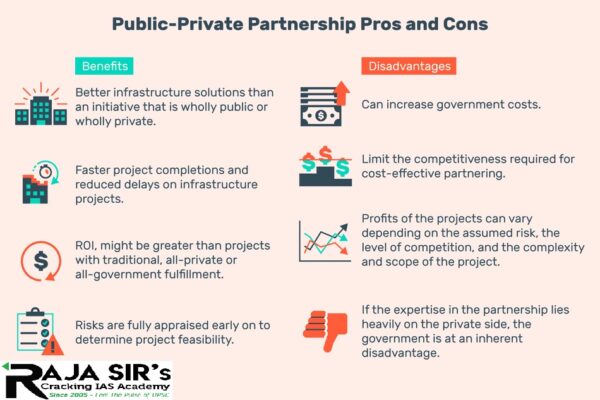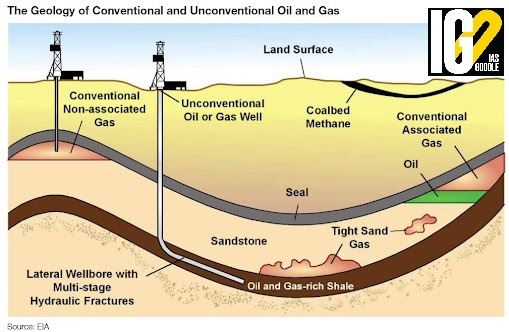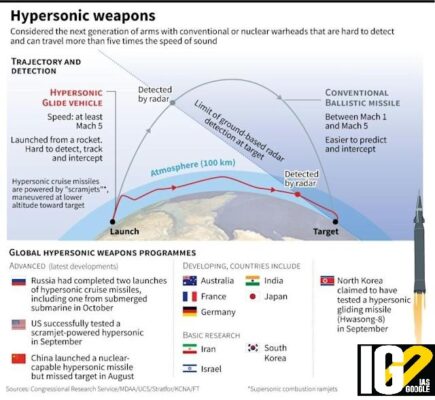- Home
- Prelims
- Mains
- Current Affairs
- Study Materials
- Test Series
23rd Nov 2021
RBI PANEL MOOTS LAW TO REGULATE DIGITAL LENDING
A Reserve Bank of India (RBI) Working Group (WG) on digital lending has recommended a separate legislation to oversee digital lending.
Digital Lending:








- Digital lending is the process of offering loans that are applied for, disbursed, and managed through digital channels, in which lenders use digitized data to inform credit decisions and build intelligent customer engagement.
- Bank/NBFC-owned digital platforms operating under the direct regulatory purview of RBI.
- Fintech companies’ proprietary digital platforms, working in partnership with banks/NBFCs.
- These platforms are not required to seek any registration with RBI, and are only indirectly regulated through RBI’s outsourcing guidelines applicable to Banks/NBFCs
- Peer-to-peer (P2P) lending platforms, which usually involve the otherwise unregulated retail lenders.
- RBI has mandated such platforms to seek registration as NBFC-P2P; thus, they are directly regulated by RBI.

- Unauthorised lenders
- Exorbitant rates of interest
- Use of coercive repayment methods
- Non-consensual collection or use of user data.
- Development of certain baseline technology standards and compliance with those standards as a pre-condition for offering digital lending solutions should be mandated.
- Disbursement of loans directly into the bank accounts of borrowers and disbursement and servicing of loans only through bank accounts of the digital lenders should be enforced.
- Data collection with only prior and explicit consent of borrowers with verifiable audit trails should be undertaken.
- Each digital lender should provide a key fact statement in a standardised format including the Annual Percentage Rate.

- U.S. was the largest source country for remittances in 2020, followed by the United Arab Emirates, Saudi Arabia, and Switzerland.
- As a share of gross domestic product, the biggest remittance recipients are Tonga, Lebanon, the Kyrgyz Republic, Tajikistan.
- Remittances to low- and middle-income countries reached $589 billion in 2021.
- Remittance flows from migrants complemented government cash-transfer programs to support families suffering from economic hardships during the Covid-19 crisis.
- Cost of sending money across international borders averaged 6.4% in the first quarter of 2021.
- Remittance costs: South Asia has the lowest average costs of any world region at 4.6 %.
- India had received over $ 83 billion in remittances in 2020.
- India is followed by China, Mexico, the Philippines, and Egypt.
- In India, remittances are projected to grow three per cent in 2022 to $ 89.6 billion
- Remittance is derived from the word 'remit' which means 'to send back'.
- It refers to money that is sent or transferred to another party, usually overseas.
- It can be sent via a wire transfer, electronic payment system, mail, draft, or cheque.
- They can be used for any type of payment including invoices for business purposes or other obligations like personal transfers.
- Migration among people who choose to live abroad for jobs or studies is increasing.
- Therefore, many remittances are made by people who want to send money back home.
- Businesses have increasingly relied on the internet as it makes collaborating with suppliers, employees, and clients easier.
- This has resulted in overseas remittances paying for business invoices.
- Under the Foreign Exchange Management Act (FEMA) of 1999, Non-Resident Indians (NRIs) and Persons of Indian Origin (PIOs) can open and maintain three types of accounts
- Non-Resident Ordinary Rupee Account (NRO)
- Non-Resident (External) Rupee Account (NRE)
- Foreign Currency Non-Resident (Bank) Account (FCNR).
- NRO Accounts are not repatriable except for all current income.
- At the macro level, remittances contribute to maintaining stable foreign reserves.
- Remittances help Indian Rupee hold its value against the US dollar and forms a significant part of the GDP.
- On a micro level, remittances have shown a positive impact on healthcare, entrepreneurship, education, and overall economic development of the recipient families.
- Inward remittance refers to the money sent by Indian expats residing abroad to their near ones in India.
- Outward remittances refer to money sent overseas by residents of India for specific purposes.
- Authorized dealers and banks in India like SBI, PNB, Bank of Baroda, Axis Bank, ICICI Bank, etc. offer these services.
- Under the RBI's Liberalized Remittance Scheme, resident individuals are allowed to remit up to USD 250,000 per financial year.
- This could be under various categories involving current account transactions including going overseas on employment, studies overseas, emigration, and medical treatment.
- The new MCA will be applicable to all the future PPP projects at major ports.
- It will include projects which are already approved by the government but are still under bidding stage.
- It will bring more developers, investors and lenders and other stakeholders in the Ports sector and catalyze the investment in the sector.
- There are more than 80 public private partnership (PPP) projects in the sector with investment of over Rs 56,000 crores.
- Provision of change in cargo has been introduced for the first time.
- Due to external factors, traffic for a particular commodity has dropped during the concession period.
- It will provide the flexibility to undertake change in cargo in such situation and reduces risk for the concessionaire.
- Provision has been made for providing flexibility to the concessionaires to fix their tariff based on market conditions
- It will allow level playing field for the private terminals at major ports to compete with private ports for cargo.
- To reduce risk to the lenders provision of compensation for concessionaire's event of default before Commercial Operations Date (COD) has been added.
- MCA is a legal contract that forms the basis of public private partnership (PPP) projects in India.
- It lays down the terms and conditions for executing a road project till a private firm operates.
- It states the policy and regulatory framework for implementation of a PPP project.
- MCA addresses all issues related to a PPP framework like
- Mitigation and unbundling of risks
- Allocation of risks and returns
- Symmetry of obligations between the principal parties
- Precision and predictability of costs & obligations
- Reduction of transaction costs and termination.
- The model is available for various sectors like National Highways, State Highways, Urban Rail Transit System and Ports.

- Public-private partnerships involve collaboration between a government agency and a private-sector company to finance, and operate projects, like public transportation networks, parks, and convention centers.
- It often involves concessions of tax, protection from liability, partial ownership rights over nominally public services and property to private sector, for-profit entities.
- Ensure necessary investments into public sector and effective public resources management.
- Ensure higher quality and timely provision of public services.
- A private entity is granted the opportunity to obtain a long-term remuneration.
- Private sector expertise and experience are utilized in PPP projects implementation.
- PPP project risks allocation enables to reduce the risk management expenditures.
- Infrastructure or services delivered could be more expensive
- The service procurement procedure is longer and more costly in comparison with traditional public procurement.
- The project agreements are long-term, and inflexible because of impossibility to envisage events that could influence the future activity.

- Shale oil is a high-quality crude oil that lies between layers of shale rock.
- Shale Rock is a fine-grained sedimentary rock formed from mud.
- The rocks are hydraulically fractured to extract the oil.
- It is also known as ‘Tight Oil’.
- It is the largest source of domestic oil in the United States.
- Shale oil are formed from hydrocarbons that are trapped in shale rock which can be extracted for refining.
- The oil is extracted via horizontal drilling techniques and hydraulic fracturing.
- It gives access to the reservoir rock.
- High-pressure of water, sand, and chemicals are pumped to fracture the shale and release the oil.
- There is flexibility in oil extraction.
- Oil can be stored in wells until oil prices rise.
- It increases productivity.
- It reduces oil and gas prices.
- It uses a lot of natural resources that gives negative impact to the environment.
- The extraction process of shale oil is much more capital and labor intensive.
- It may cause earthquakes.
- It also affects drinking water.
- Terrestrial – Lipid rich organic matter
- Lacustrine – Organic matter from algae
- Marine –Organic matter derived from marine animals
- Exploration of shale gas and oil in India is done by National Oil Companies (NOCs).
- Cambay basin
- Krishna & Godavari Basin
- Cauvery Basin
- Assam and Assam Arakan (A&AA) Basins

- Around $8.4 trillion would be needed to scale up generation from renewable energy and contributing towards infrastructure.
- Another $1.5 trillion would have to be invested in industrial sector for setting up green hydrogen production capacity to advance the sector’s decarbonization.
- Green hydrogen is hydrogen gas made from renewable energy and can be used from heating to powering batteries and fueling vehicles.
- India would fall short by $3.5 trillion to achieve net-zero emissions by 2070.
- Investment support of $1.4 trillion, in the form of concessional finance, would be required from developed economies to mobilise foreign capital.
- Concessional finance refers to loans at below-market interest rates.
- India’s total installed solar power capacity would need to increase to 5,630 gigawatts by 2070.
- The usage of coal, especially for power generation, would need to peak by 2040 and drop by 99% between 2040 and 2060.
- Crude oil consumption across sectors would need to peak by 2050 and fall by 90% between 2050 and 2070.
- Green hydrogen could contribute 19% of the total energy needs of the industrial sector.
- To raise the non-fossil fuel-based energy capacity of the country to 500 GW by 2030
- To meet 50% of the country’s energy requirements using renewable energy sources by 2030
- To reduce the total projected carbon emission by one billion tonnes between now and 2030
- To reduce 45% carbon intensity by 2030
- To become carbon neutral and achieve net-zero emissions by 2070
- CEEW is one of South Asia’s leading not-for-profit policy research institution.
- It was established in 2010.
- The Council uses data, integrated analysis, to explain the use, reuse, and misuse of resources.
- It is a voluntary series of biennial meetings between the littoral states of the Indian Ocean region.
- Launched in: 2008 with India as host.
- Aim: To increase maritime security cooperation.
- To discuss regional maritime issues.
- To promote friendly relationships among the member states.
- The chairmanship and location of the Symposium rotates between the various member states.
- It is the decision-making body at the level of Chiefs of Navies.
- Aim: To facilitate a greater degree of maritime cooperation and understanding between the IONS nations.
- To enable a common understanding of regional maritime issues.
- To facilitate generation of mutually-beneficial maritime security outcomes.
- Members: The countries that touches or lie within Indian Ocean Regions.
- South Asian Littorals: Bangladesh, India, Maldives, Pakistan, Seychelles, Sri Lanka and United Kingdom (British Indian Ocean Territory)
- West Asian Littorals: Iran, Oman, Saudi Arabia and United Arab Emirates
- East African Littorals: France (Reunion), Kenya, Mauritius, Mozambique, South Africa, and Tanzania.
- South East Asian and Australian Littorals: Australia, Indonesia, Malaysia, Myanmar, Singapore, Thailand and Timor-Leste.
- China, Germany, Italy, Japan, Madagascar, the Netherlands, Russia and Spain.

- It is a maneuvering anti-ship hypersonic cruise missile developed in Russia.
- It’s a two-stage missile that uses solid fuel and a scramjet motor.
- Unmatchable speed- Zircon had reached a speed of Mach 8 during a test. This makes the Zircon world’s fastest missile.
- Plasma cloud- Rays of radio frequencies get absorbed and makes the missile invisible to radars.
- It is a missile that are fast, low-flying, and highly maneuverable.
- It travels at speeds of Mach 5 i.e., five times faster than the speed of sound.
- It reaches the target with the help of a high-speed jet engine.
- It is non-ballistic missile.
- Ballistic Missiles uses gravitational forces to reach its target.
- It is a missile that is launched from a rocket before gliding to a target.
- It surfs on the atmosphere between 40-100km in altitude and reaches its destination by leveraging aerodynamic forces.
- It is an Advanced Electronic Warfare (EW) System for Capital Warships of the Indian Navy.
- It has been designed and developed by Defence Electronics Research Laboratory (DLRL) Hyderabad, a laboratory of Defence Research and Development Organisation (DRDO).
- The system has been integrated with the wideband Electronic Support Measures (ESM)and Electronic Counter Measure (ECM) for the defence of Indian Navy Ships against missile attacks.
- The ESM of the system helps in finding accurate direction and interception of modern radars.
- The system has a built-in radar fingerprinting and data recording replay feature for post-mission analysis.
- It will be used for the interception, detection, classification, identification and jamming of conventional and modern Radars.
- It will provide an electronic layer of defence against modern radars and anti-ship missiles to ensure electronic dominance and survivability in the maritime battlefield.
- This system will replace the earlier generation EW Systems of the Indian Navy.









 Latest News
Latest News
 General Studies
General Studies